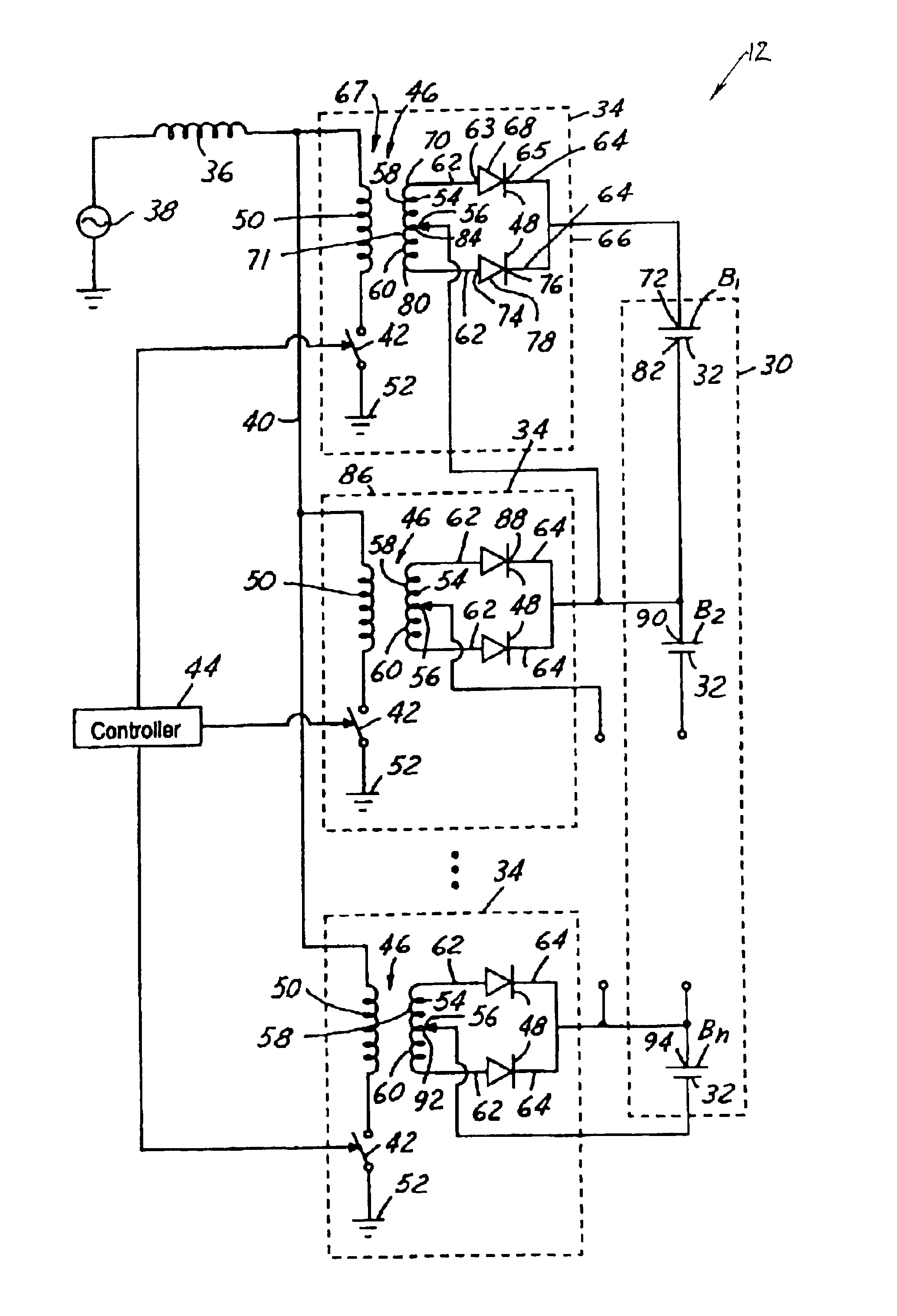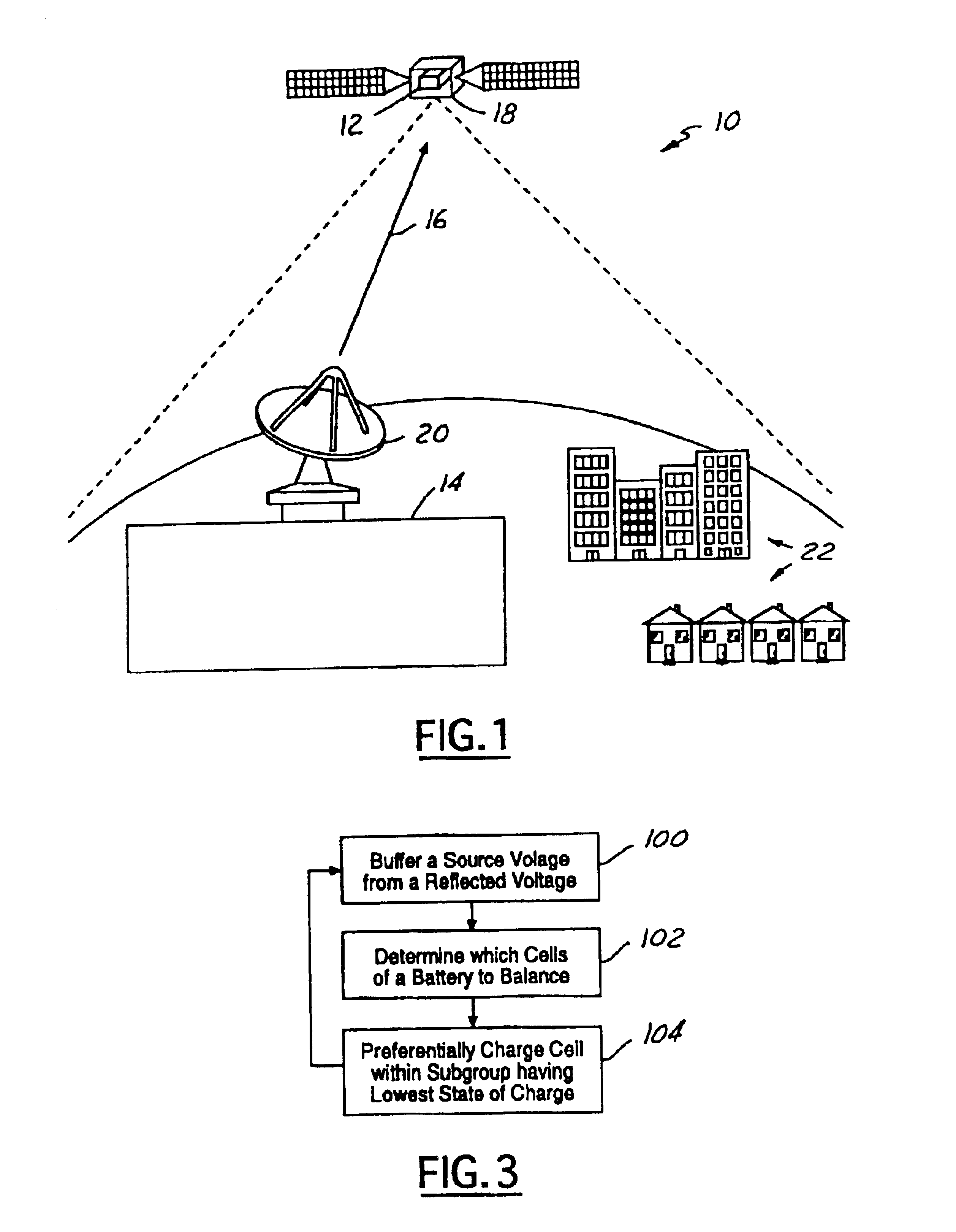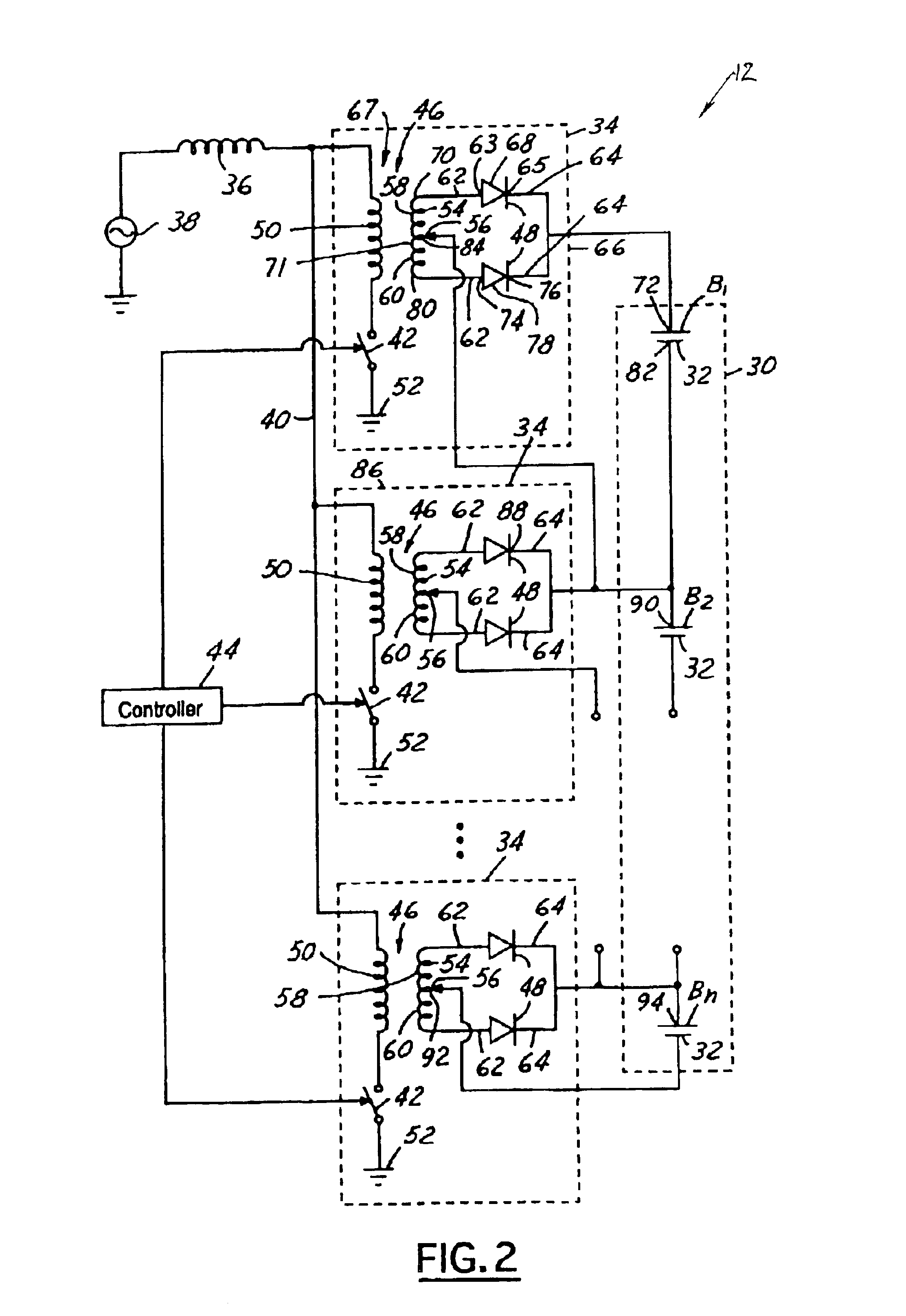Battery cell balancing system
a battery and cell voltage technology, applied in the field of battery cell voltage balancing system, can solve the problems of complex protection circuit, adversely affecting the reliability of the battery system and ultimately the spacecraft itself, and the above-stated approach is complex and costly, so as to increase the reliability and life of the battery
- Summary
- Abstract
- Description
- Claims
- Application Information
AI Technical Summary
Benefits of technology
Problems solved by technology
Method used
Image
Examples
Embodiment Construction
While the present invention is described with respect to a method and system for balancing battery cells, the present invention may be adapted for various applications and systems including: aeronautical systems, land-based systems, commercial systems, terrestrial industrial systems, vehicle systems, or other applications or systems known in the art.
In the following description, various operating parameters and components are described for one constructed embodiment. These specific parameters and components are included as examples and are not meant to be limiting.
Referring now to FIG. 1, a perspective view of a satellite system 10 utilizing a battery balancing system 12 in accordance with an embodiment of the present invention is shown. The system 10 includes a ground station 14 for transmitting communication signals 16 over various channels to a satellite 18 via a transceiver 20. The satellite 18 then retransmits the communication signals to multiple sites 22. The sites 22 may inc...
PUM
 Login to View More
Login to View More Abstract
Description
Claims
Application Information
 Login to View More
Login to View More - Generate Ideas
- Intellectual Property
- Life Sciences
- Materials
- Tech Scout
- Unparalleled Data Quality
- Higher Quality Content
- 60% Fewer Hallucinations
Browse by: Latest US Patents, China's latest patents, Technical Efficacy Thesaurus, Application Domain, Technology Topic, Popular Technical Reports.
© 2025 PatSnap. All rights reserved.Legal|Privacy policy|Modern Slavery Act Transparency Statement|Sitemap|About US| Contact US: help@patsnap.com



